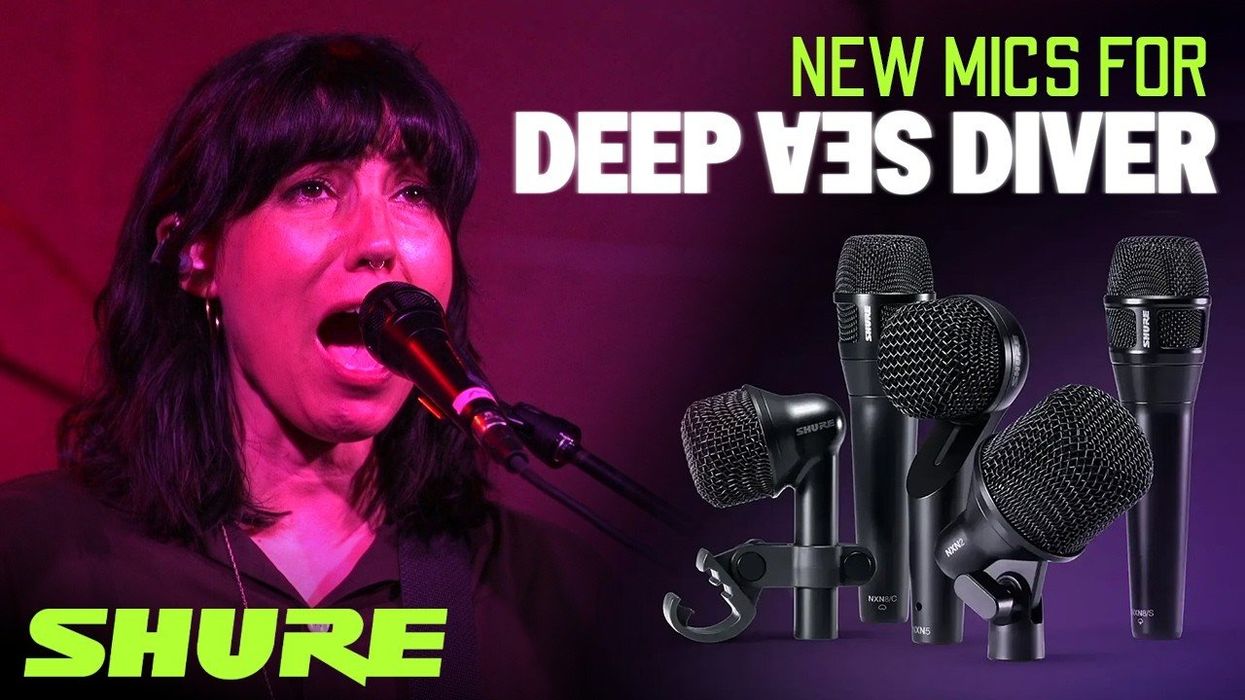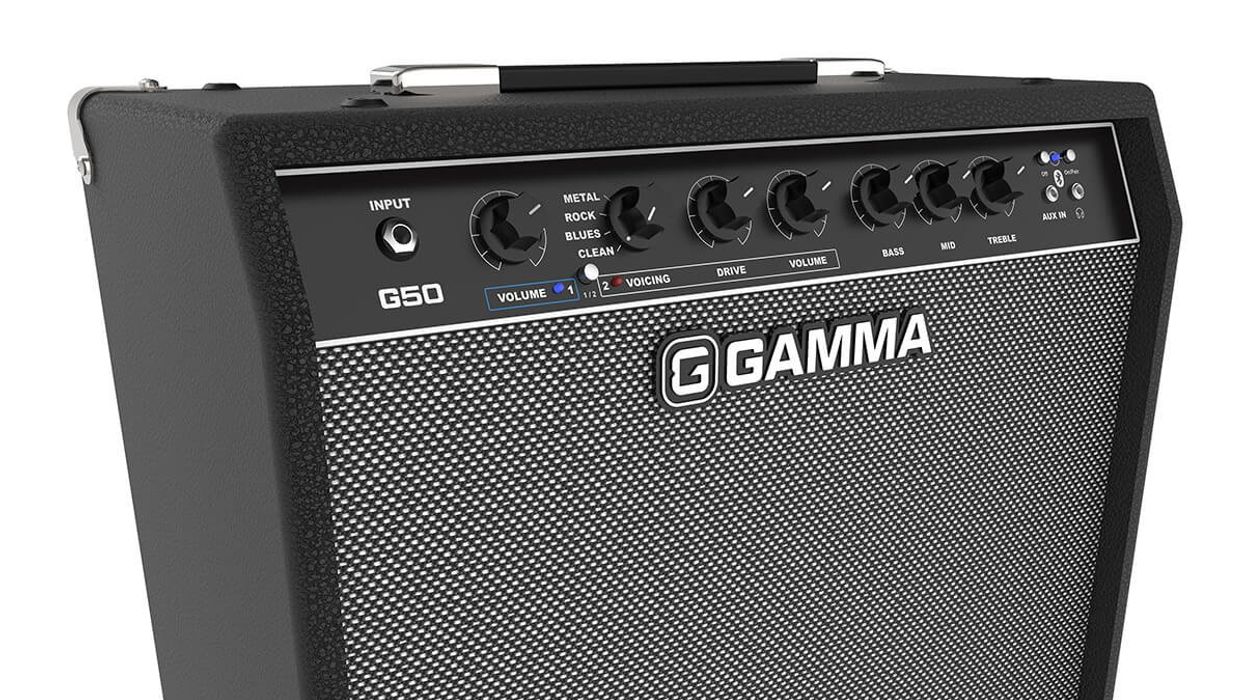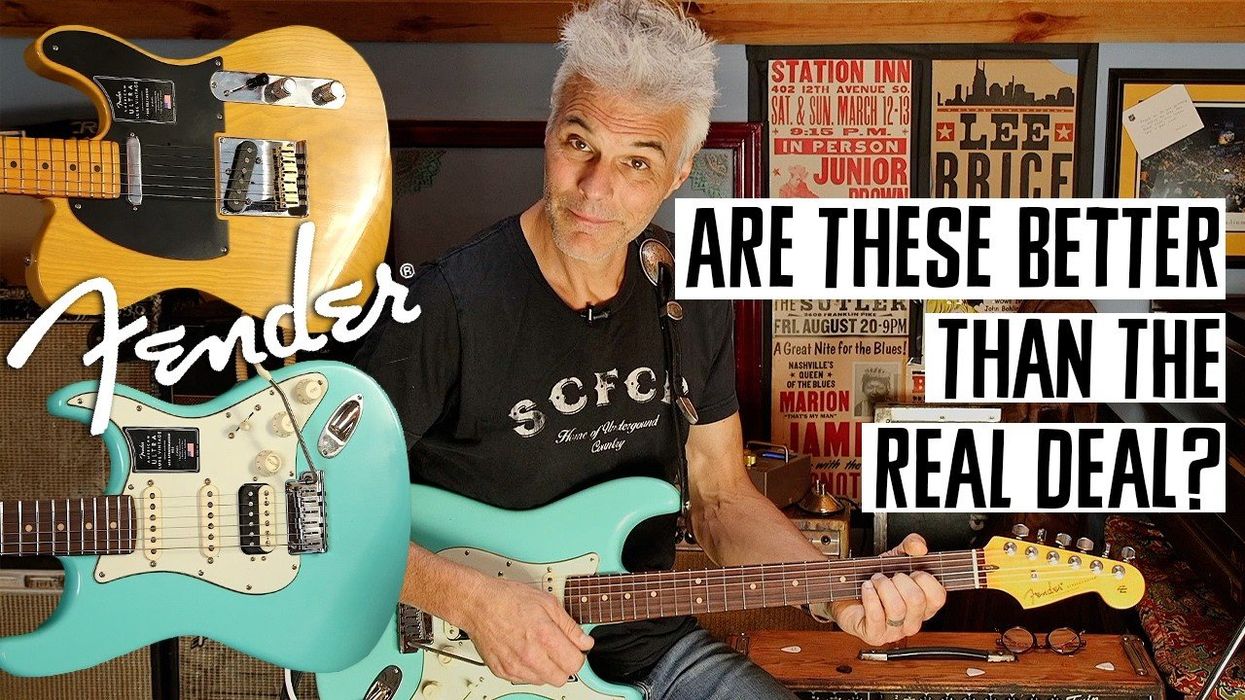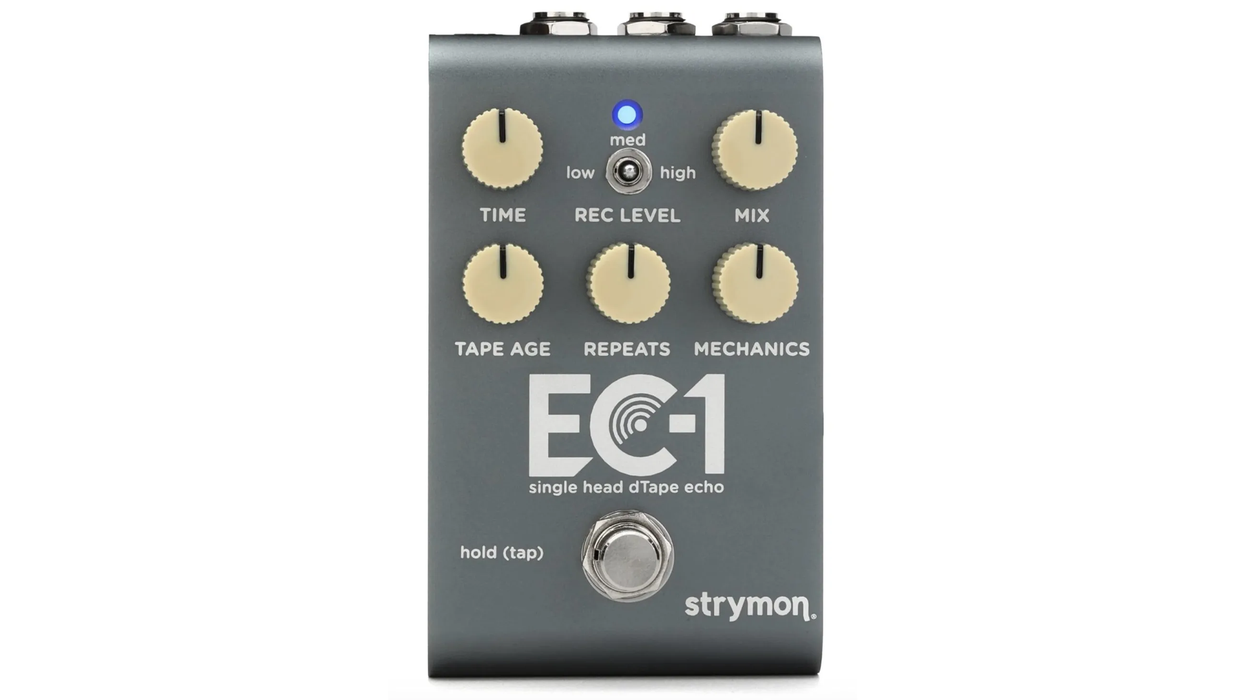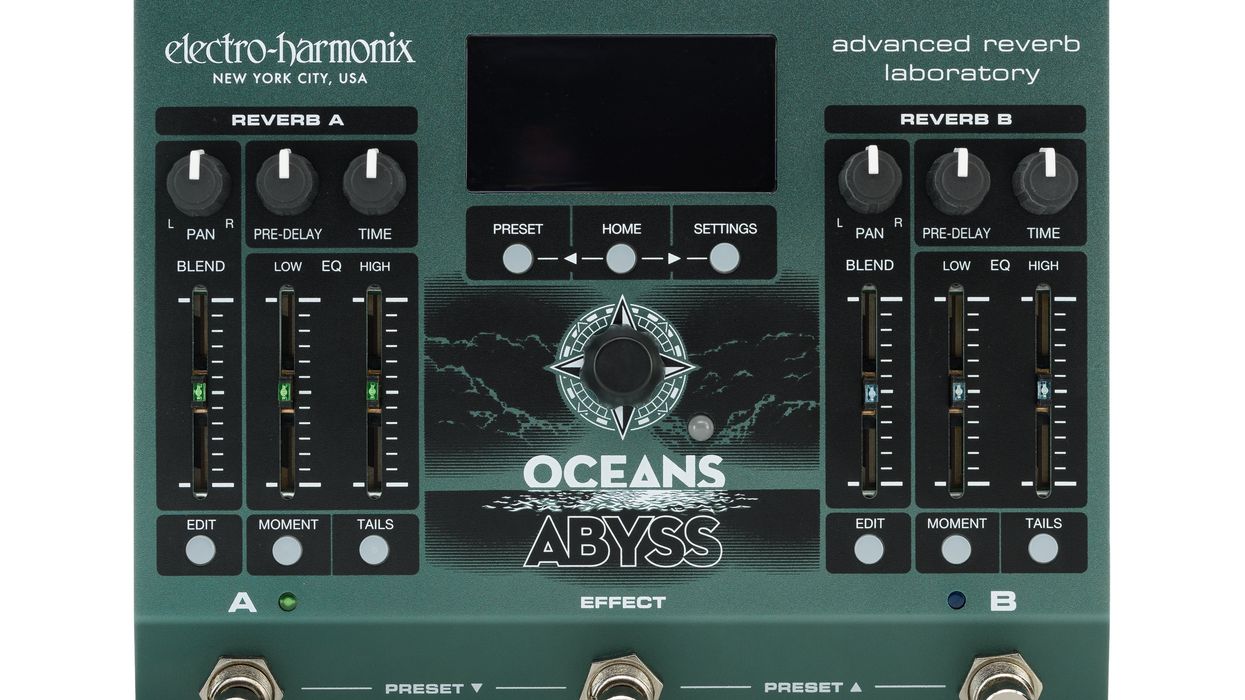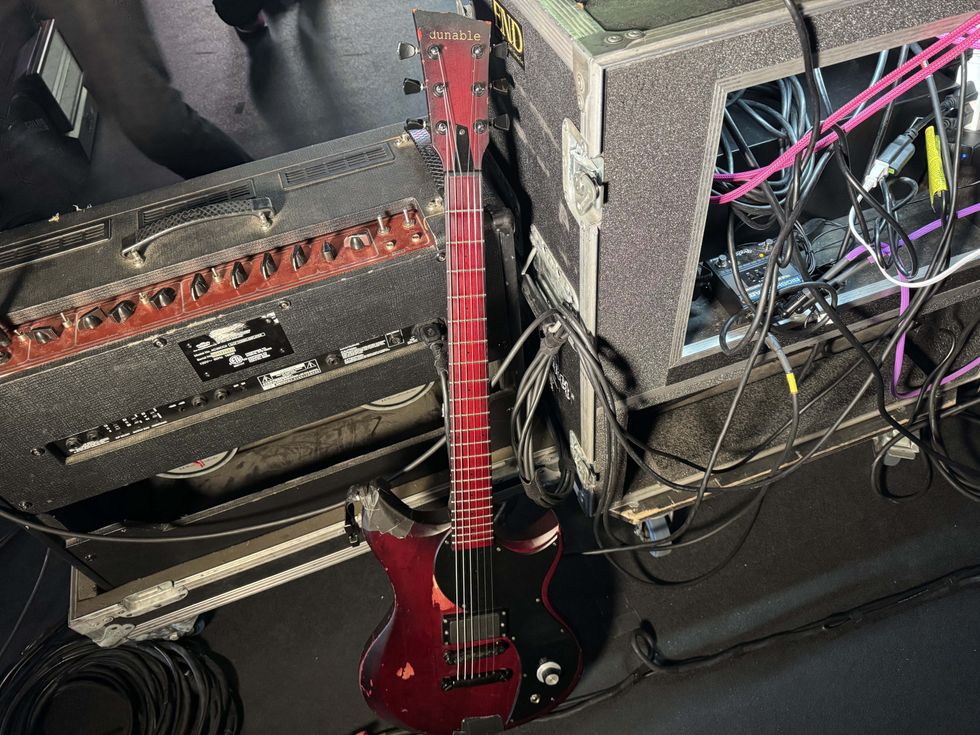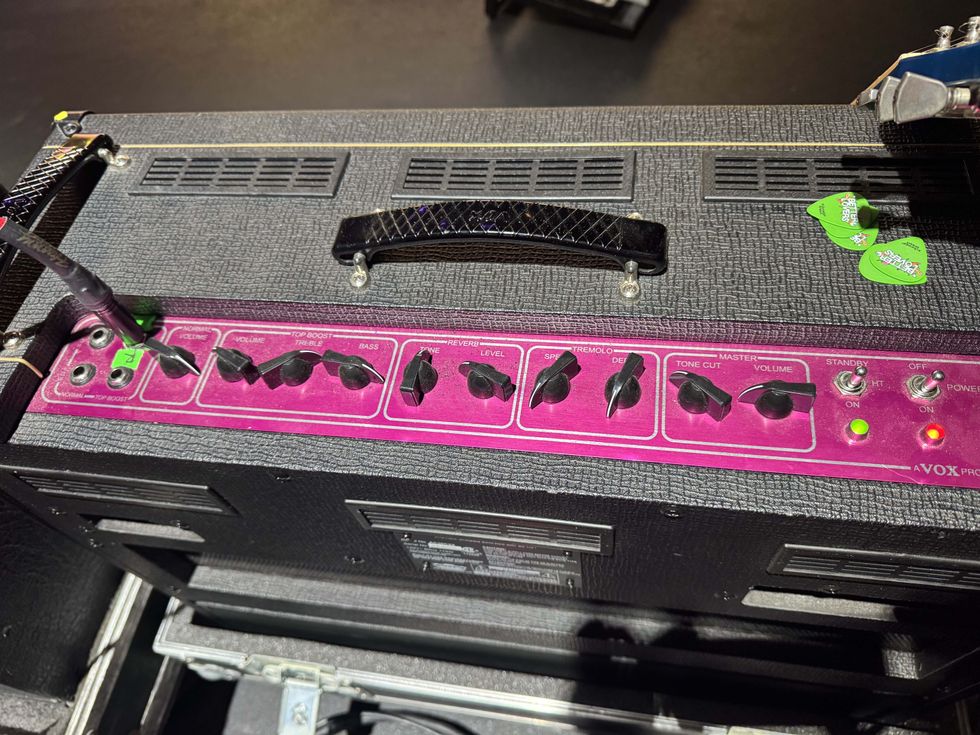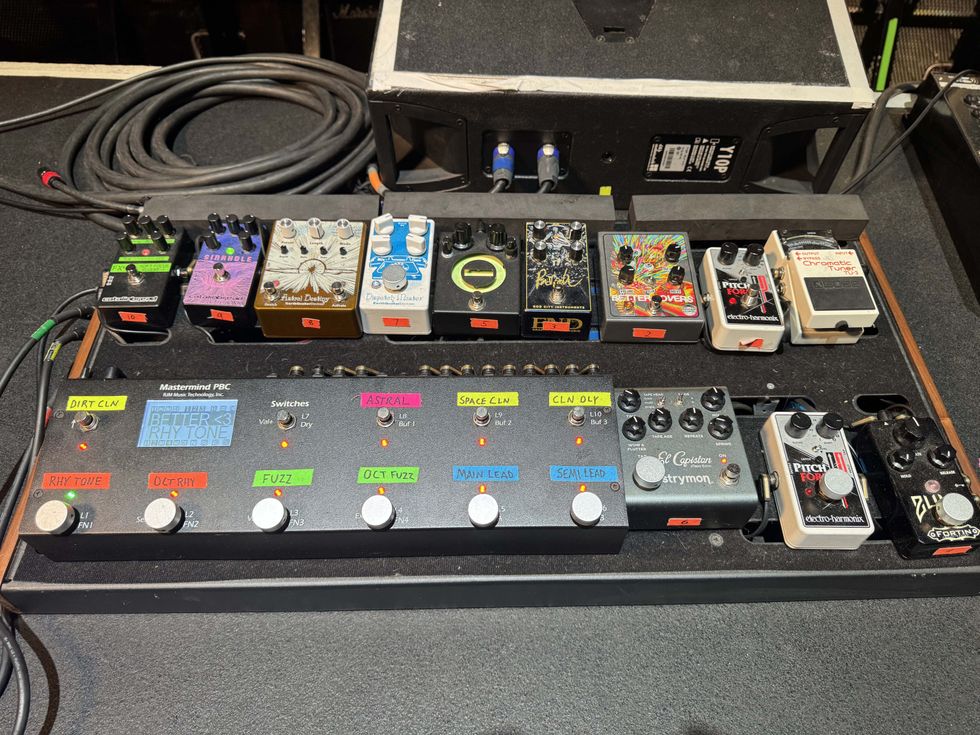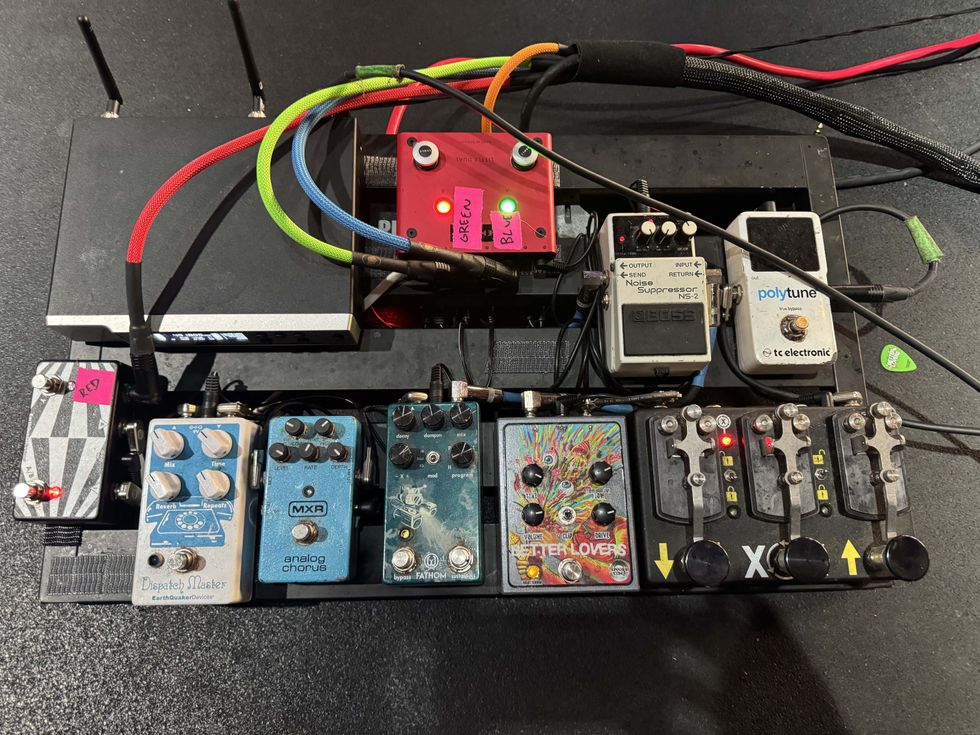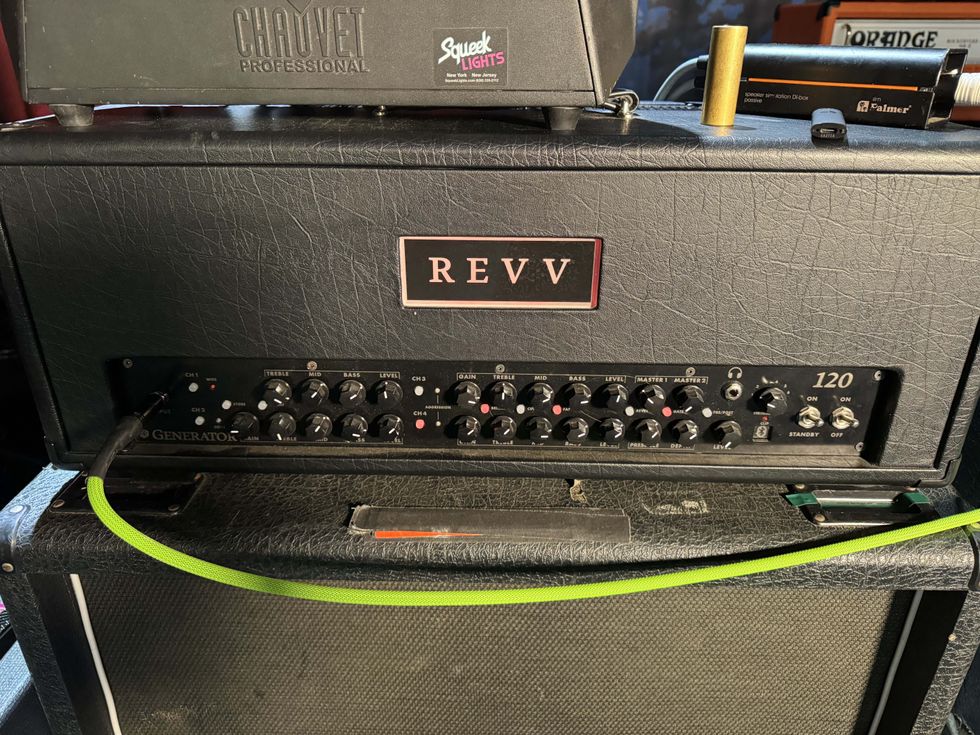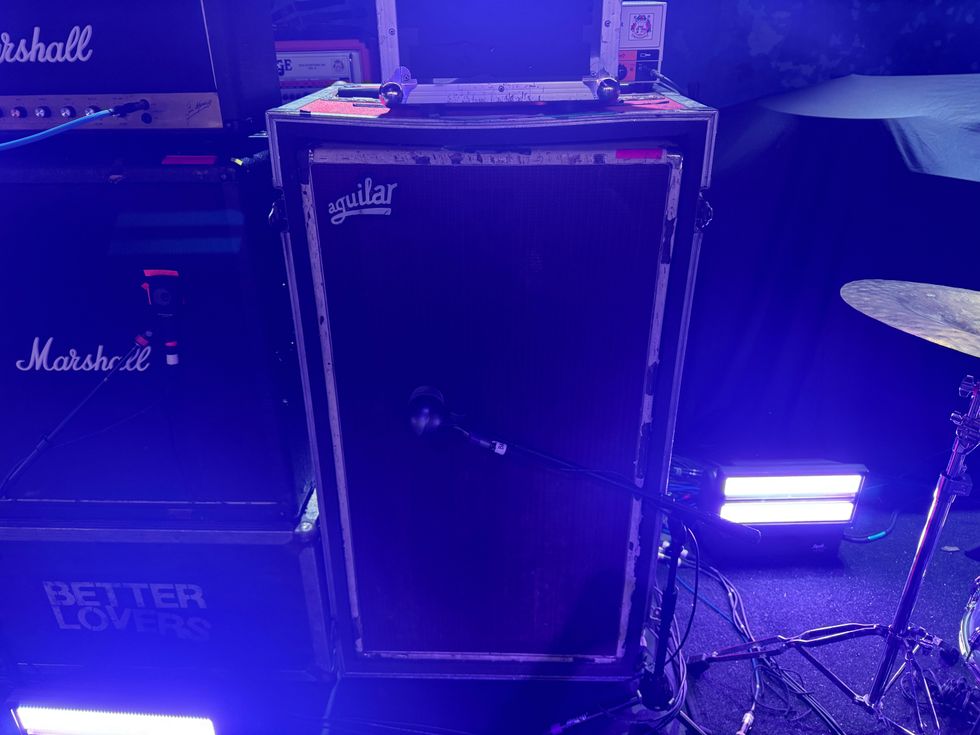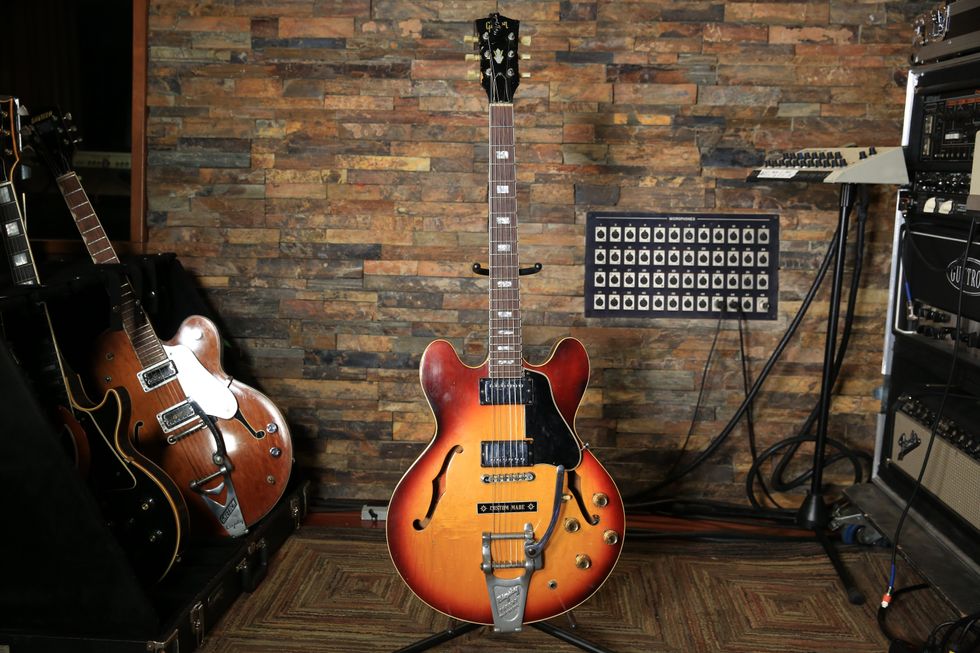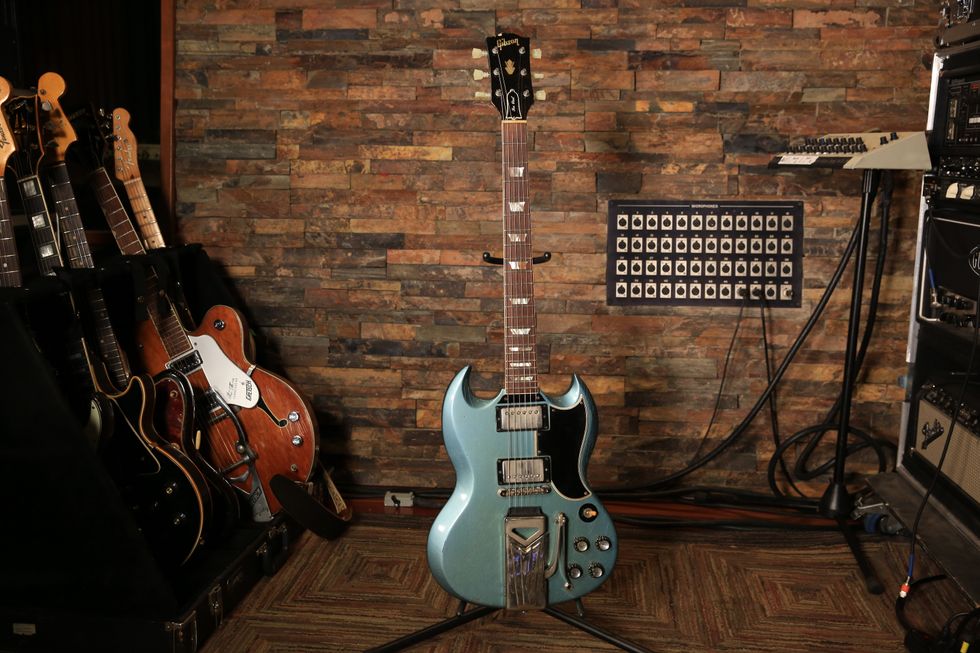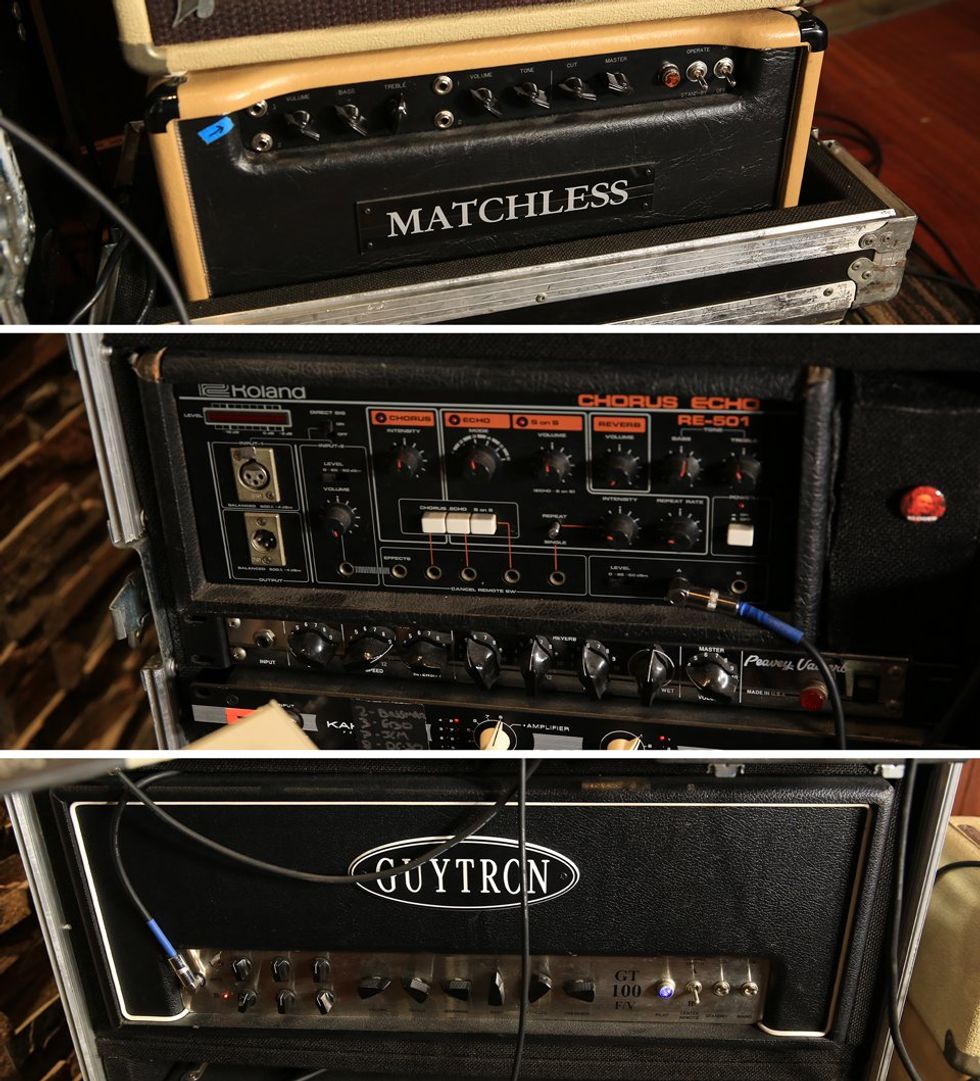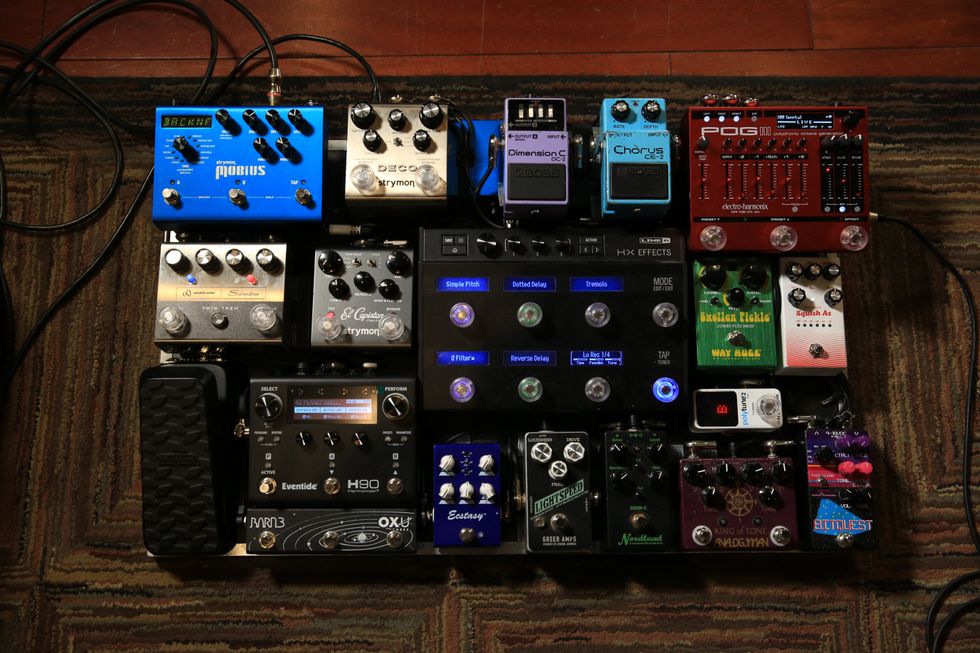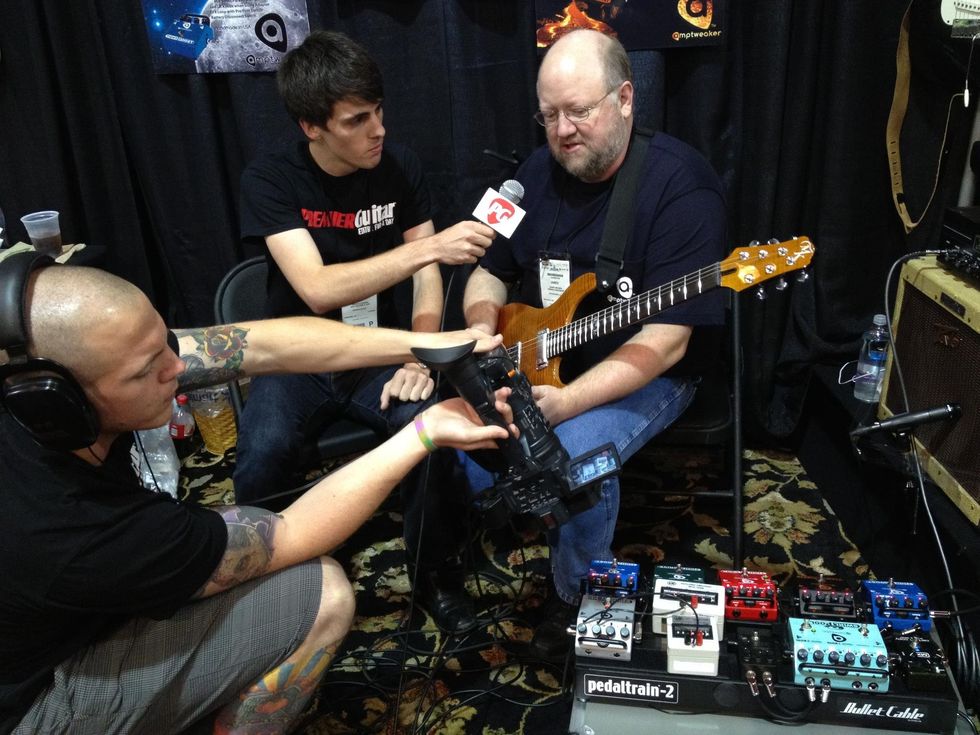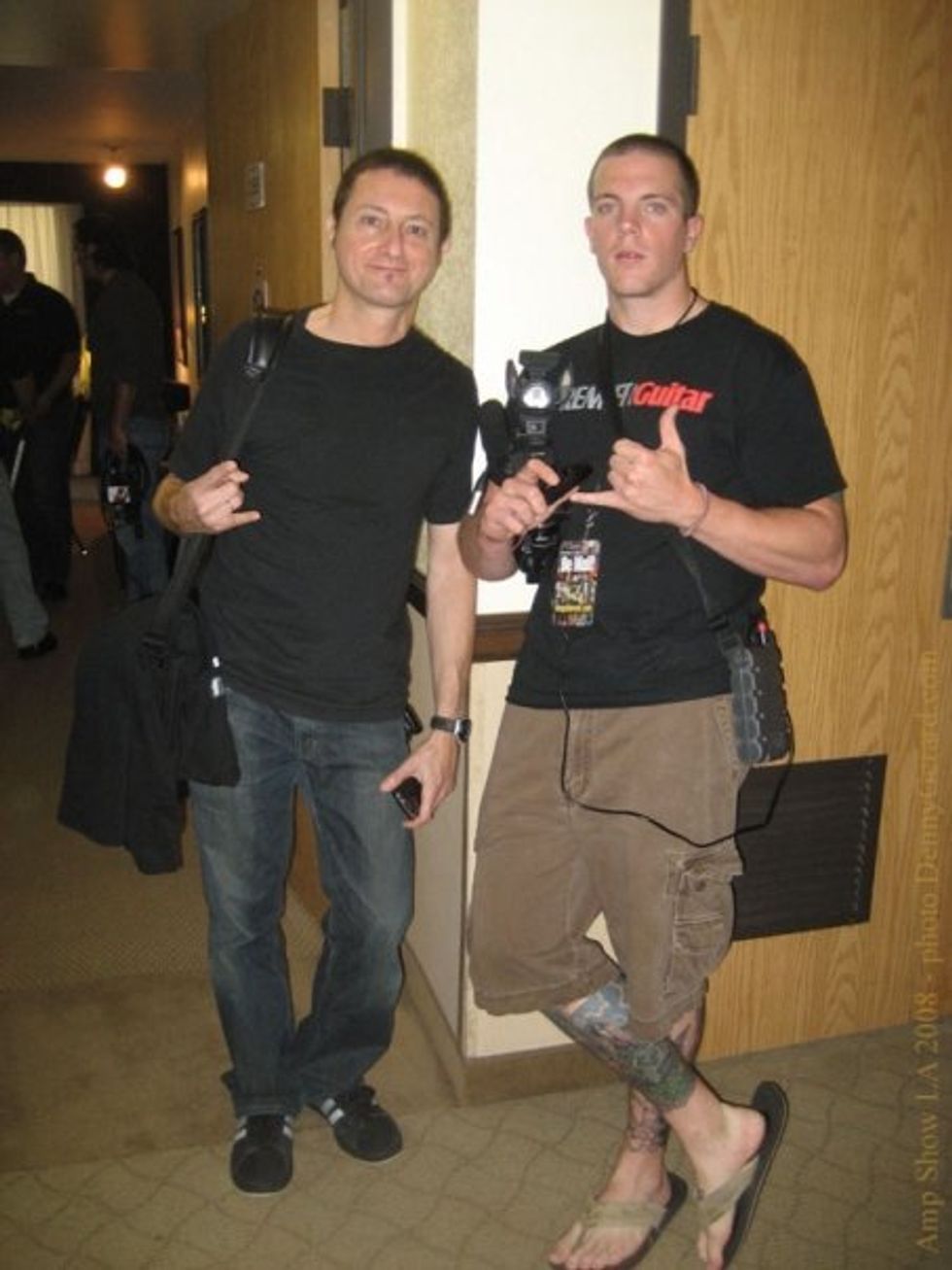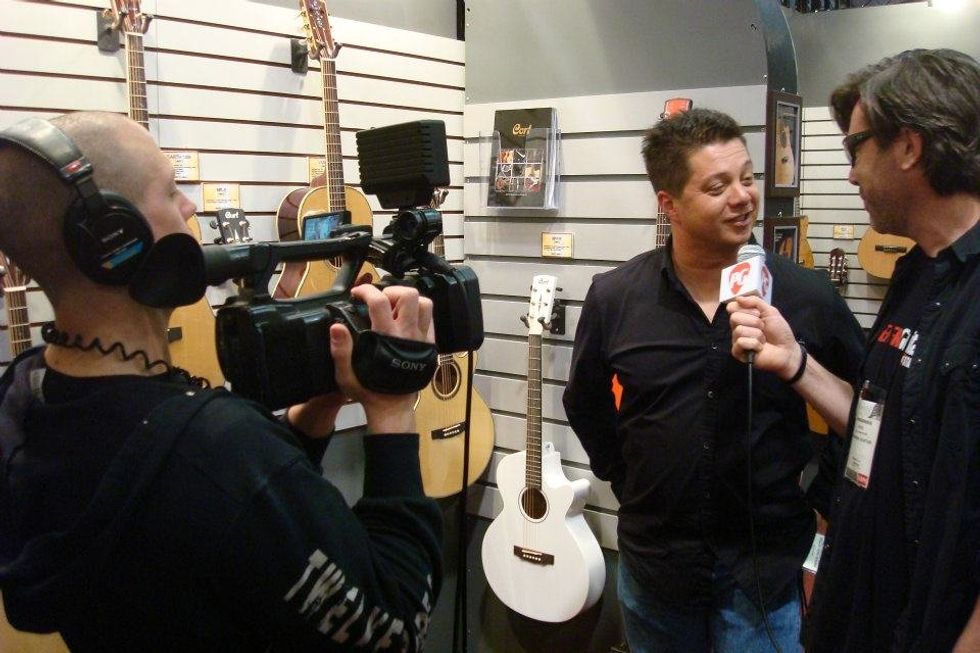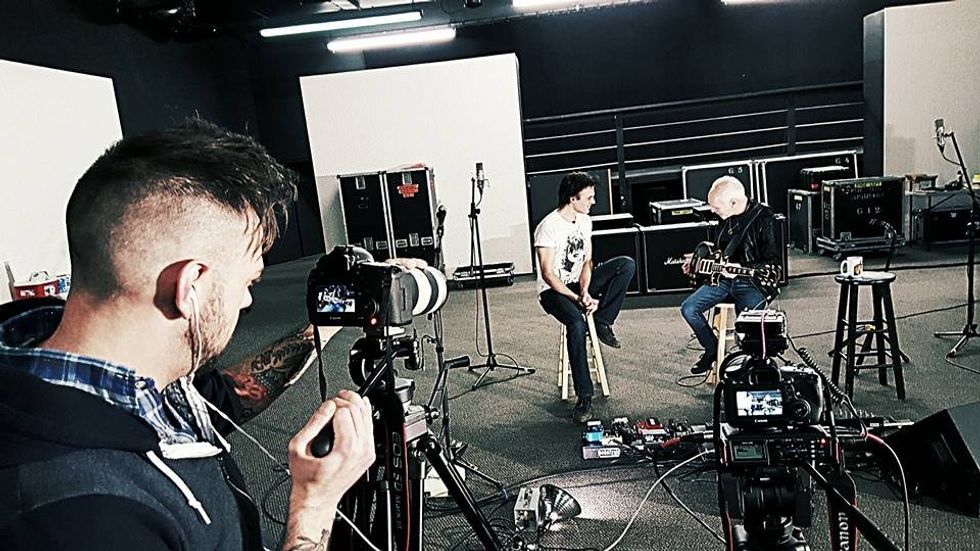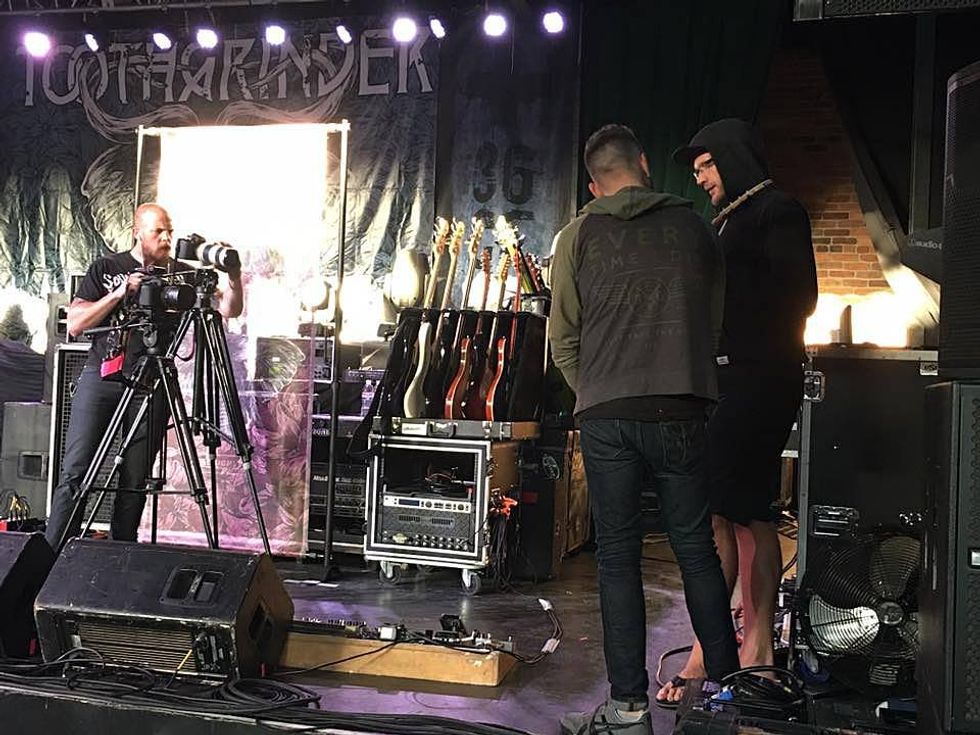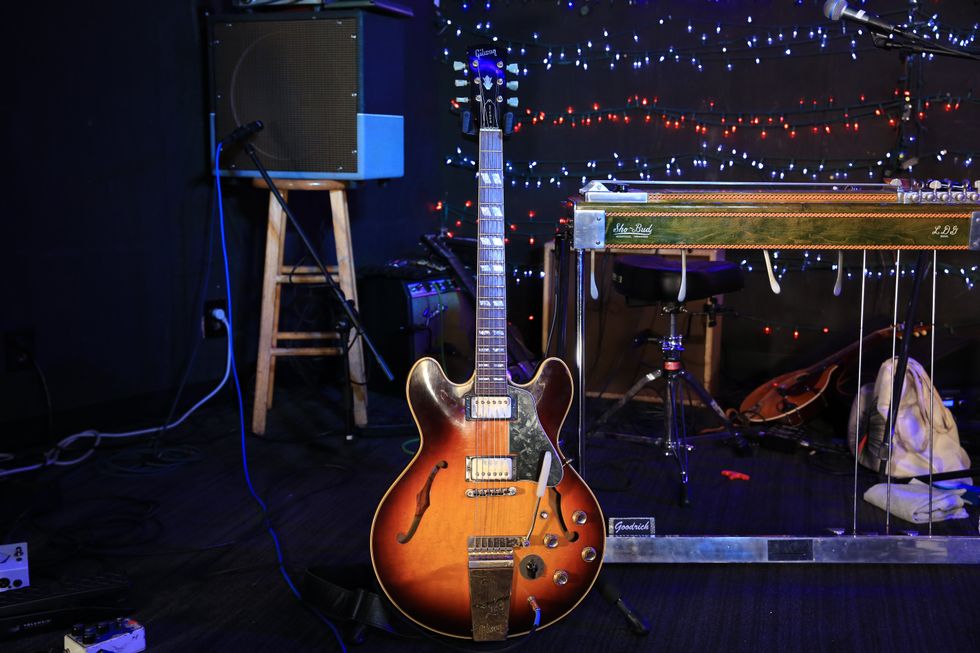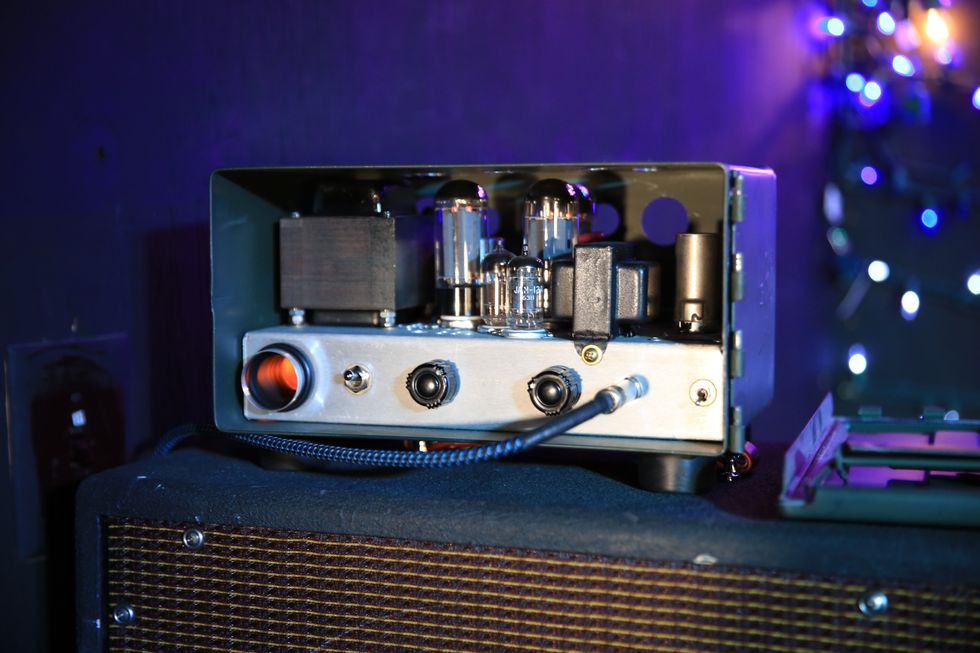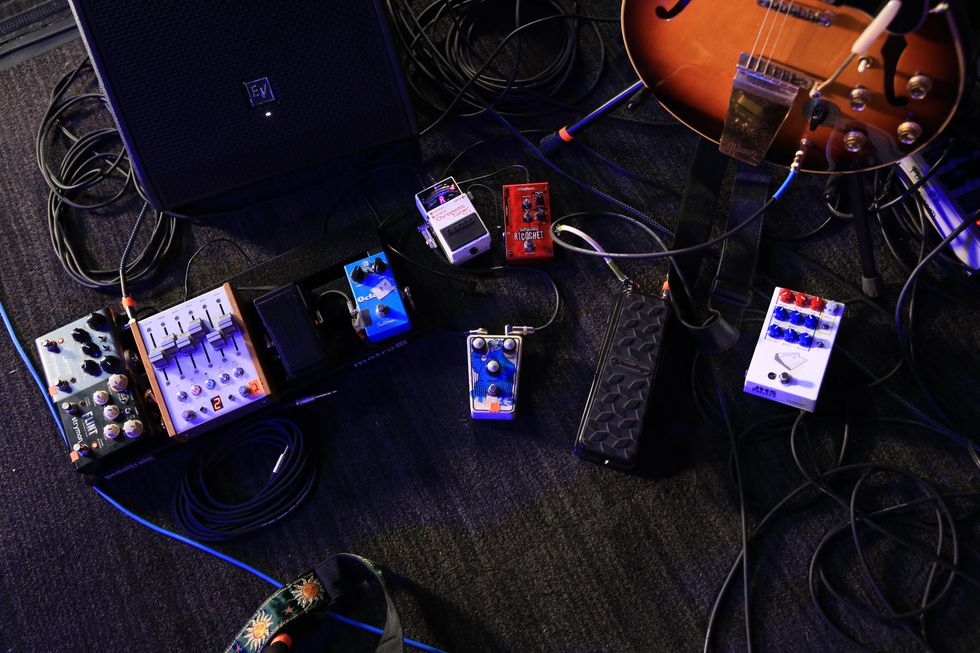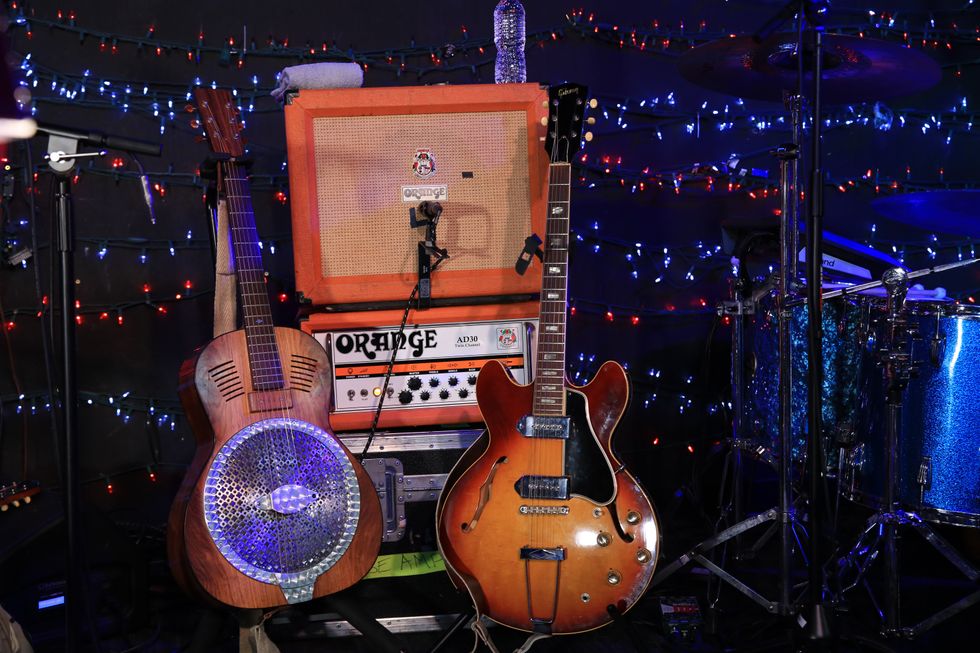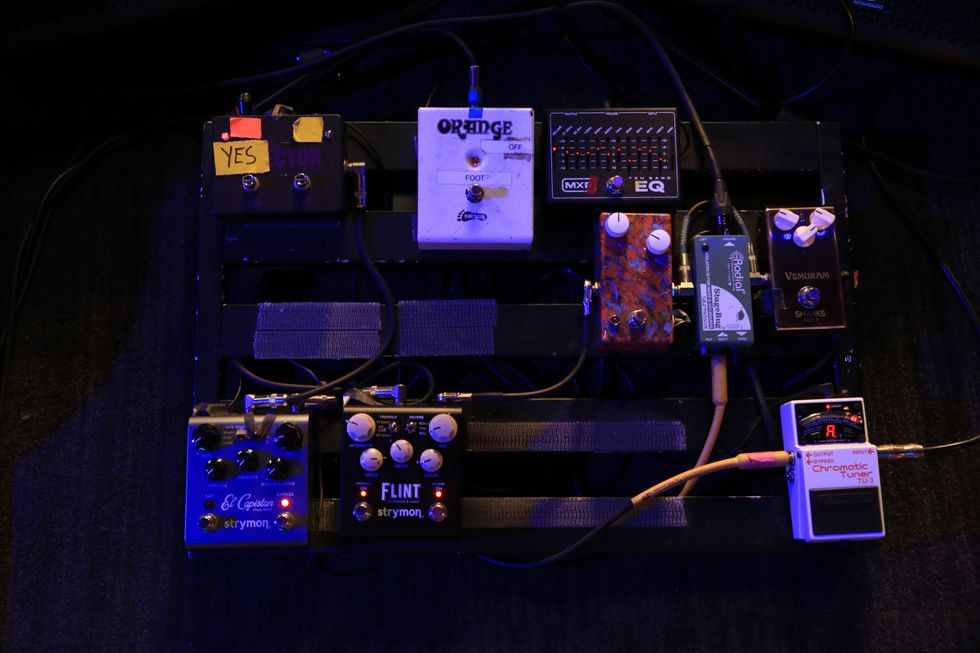The fast-rising Okies use solid-state amp heads, baritone guitars, and a bit of Peavey magic to bring their nightmare-rock to life.
Oklahoma City sludge rockers Chat Pile have had a busy few years. Their 2022 LP, God’s Country, broke them internationally, and their critically acclaimed 2024 follow-up, Cool World, solidified them as one of the most exciting heavy bands of the moment. We spoke with bassist Stin and guitarist Luther Manhole about the record for our November 2024 issue.
Now, we bring you the band’s first official Rig Rundown, filmed ahead of their show at The End in Nashville last fall. Tune in to see how Stin and Luther conjure the band’s brutal soundstorms on the road.
Brought to you by D’Addario.
Bari Blast
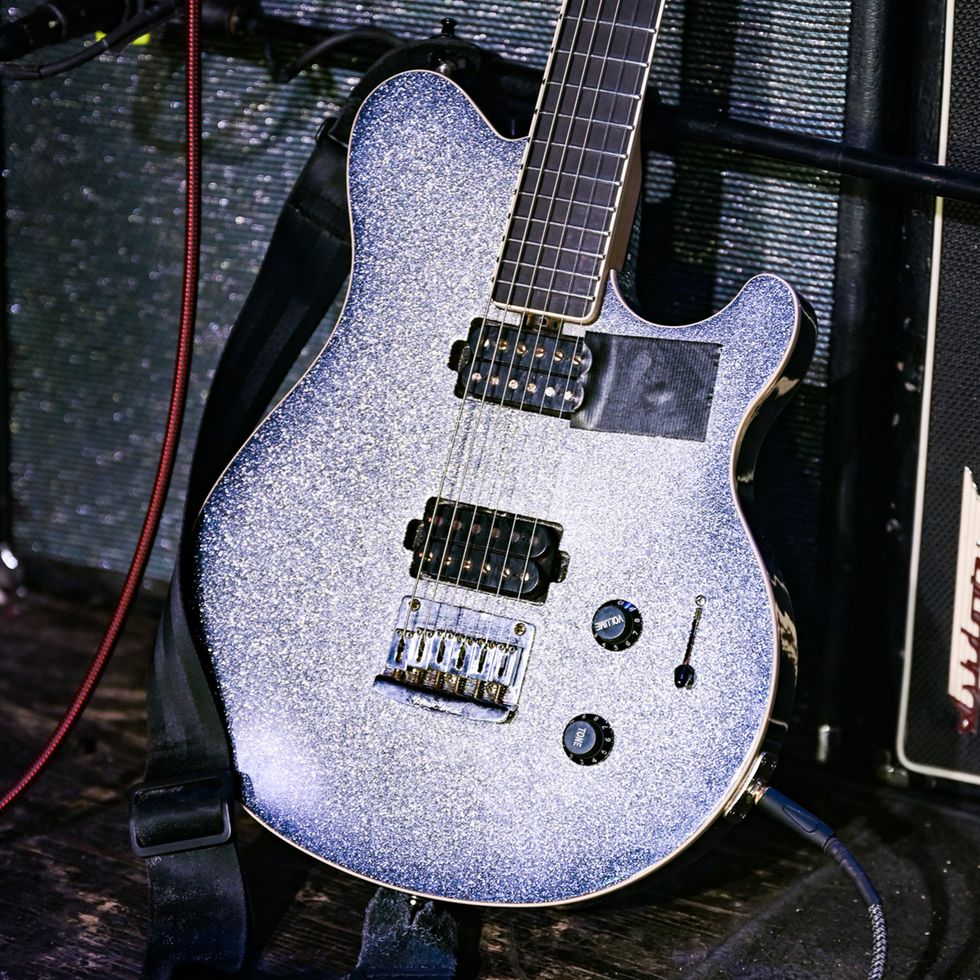
Manhole’s main machine is this baritone 6-string, an Ernie Ball Music Man BFR Axis Super Sport, finished in “starry night.” Luther took a tip from tourmate and Agriculture guitarist Richard Chowenhill and slapped some tape over his neck pickup near the first string to prevent it from catching on the edge of the humbucker. It’s tuned to drop A, with Ernie Ball Mammoth Slinky strings.
Quite the Quilter
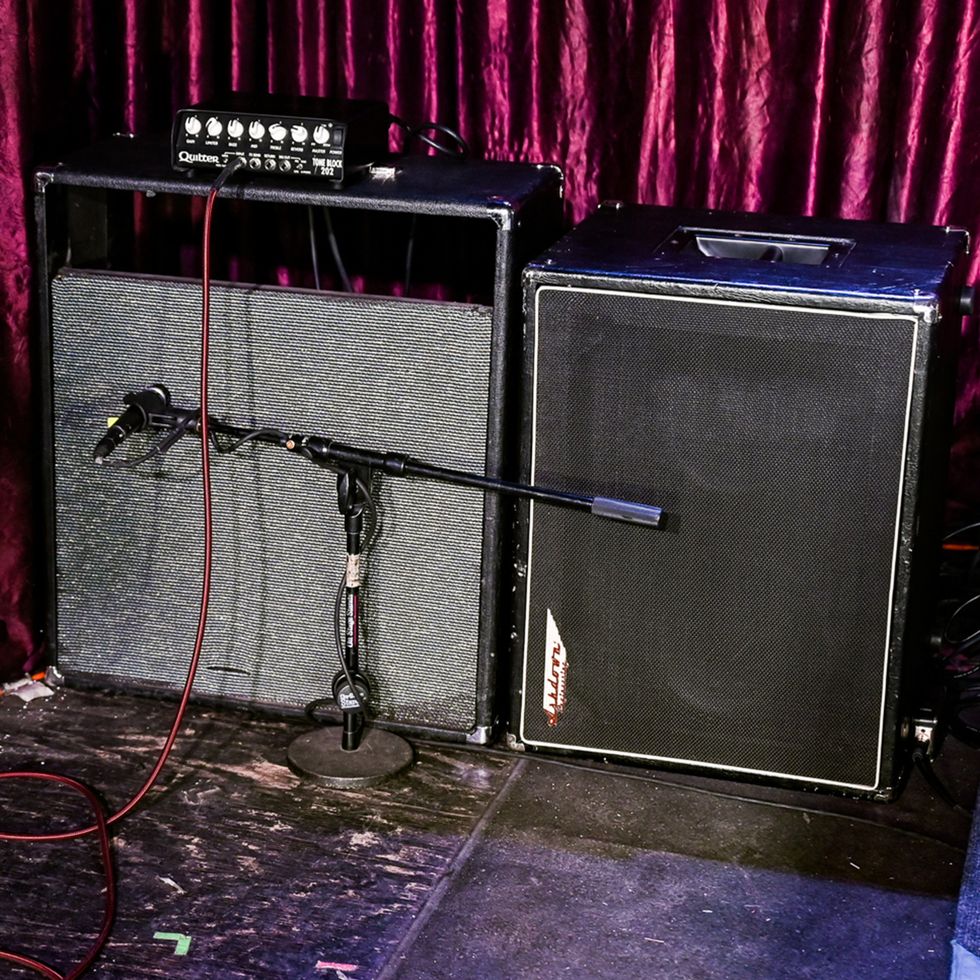
Back at home, Luther and Stin lean on big vintage amps, but on the road, Luther brings out this Quilter Tone Block 202, which is plugged into an Ampeg VT-40 combo amp that’s been gutted to run just as a 4x10 cabinet. Luther digs the icier, cutting tone from the 10″ speakers.
Luther Manhole's Board
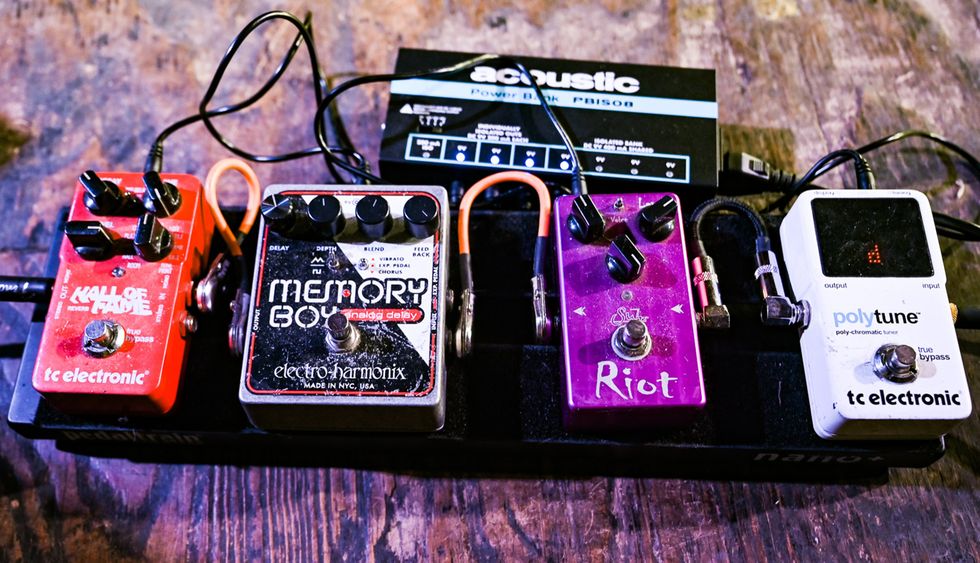
Manhole’s board is minimalist: All he needs is a TC Electronic PolyTune, a Suhr Riot for dirt, an Electro-Harmonix Memory Boy (which is set for a wobbly chorus effect), and a TC Electronic Hall of Fame for reverb—pedals he’s used for over a decade. An Acoustic PBIS08 supplies the quartet with power.
Peavey Power
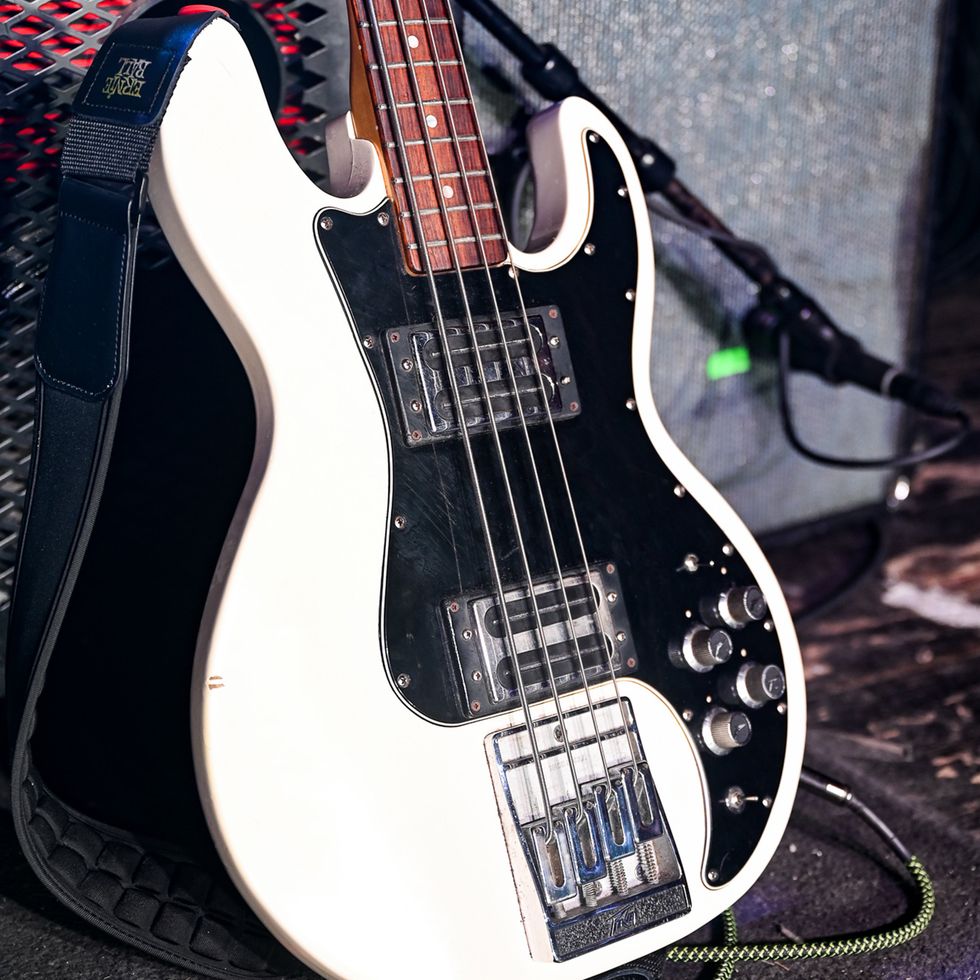
Around 2007, Stin went on a hunt around Oklahoma music shops for a Peavey T-40. He finally found one—in a total “Wayne’s World moment”—that belonged to a country singer who had passed away. Since the band’s formation, this “hot and clangy” white T-40 has been Stin’s tool for crafting Chat Pile’s elephantine, bottom-heavy sound. He uses the 5-string Ernie Ball Slinky Cobalts (.060–.125), omitting the .040 string, and plucks with orange Ernie Ball Everlast .73 mm picks for strong, percussive attack.
Building Blocks
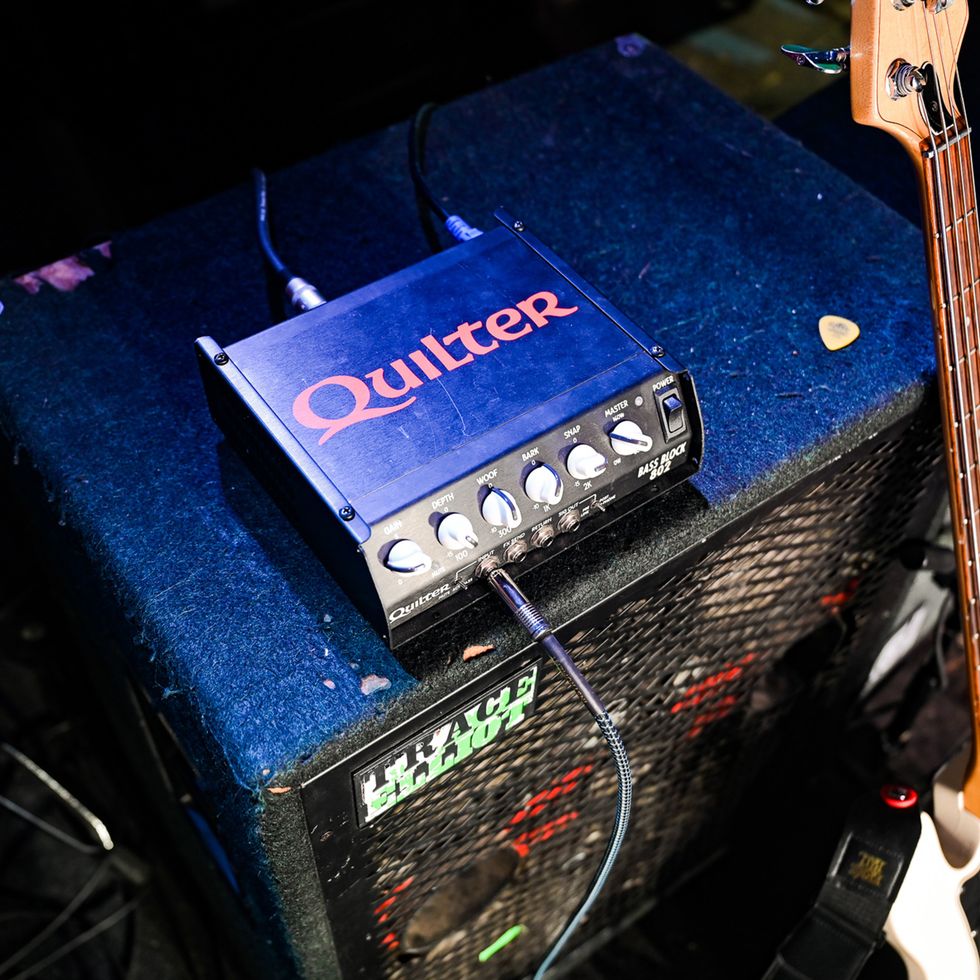
Stin’s signal runs to this Quilter Bass Block 802, which blasts through a Trace Elliot 4x10 redline cab with horns—the cab that’s been used on every Chat Pile recording to date.
Stin's Board

Stin probably thinks Manhole’s board is excessive. He packs just his Boss TU-3 and a Tronographic Rusty Box, each with their own individual power supply plugged into a power bar that’s fixed to the board.







